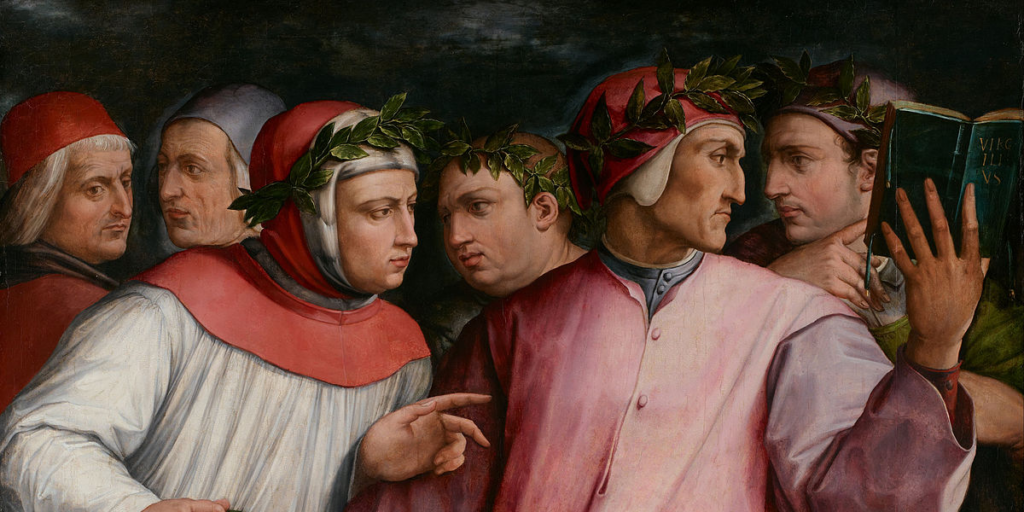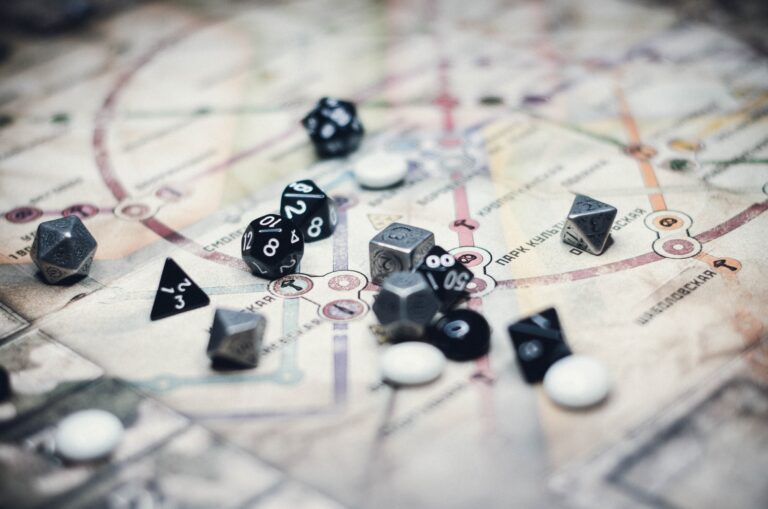The Easiest Thing in the World is to Criticize Without Contributing…

What isn’t a role-playing game? The last couple posts have been prompted by this question.
In the first post, I briefly discussed some history around the topic and made an argument as to why redefining the term “role-playing game” is both basically impossible and would ultimately fail to achieve the desired goal.
In the last post, I gave my thoughts on where the actual problem lies and why the conversation keeps recurring in the way it has.
The easiest thing in the world is to criticize without contributing, so in this post, I’d like to help move the conversation forward.
I began all this by linking to
Legendsmith‘s article “Storytelling Games are not RPGs”. He wasn’t the first person I’ve heard make some version of this argument, but he did articulate a goal that made this a conversation worth having. Their stated intent was “signposting… putting up linguistic road signs so people can find their way.” While I disagree with much of what followed, the core idea is a good one.
Redefining “role-playing game” doesn’t help point anyone anywhere useful, but there are signs that we can develop that might. I am going to skip right past labels like “OSR” or “Story-game.” The former coalesces into some fuzzy but broadly useful meaning, but the latter is functionally useless as a positive definition. Lumping Microscope into the same category as The Burning Wheel or Apocalypse World doesn’t do anything useful for anyone.
Instead, I’m going to argue that we need to go a step deeper. To revisit our computer game analogy, we’re not going to start by labeling “Real Time Strategy,” we’re starting at the level of “First person” vs “third person,” 2d vs 3d, side-scroller vs isometric. Doing this gives us the ability to articulate the actual qualities we’re looking for, even within a given umbrella.
The rest of this post will be analyzing the core dynamics on which different role-playing games are built. Many of these will overlap and some games will fall in between the options given or use different options in different areas within the same design.
Who Drives the Action?
- Player-Led. The game is designed as such that it has baked-in goals for the PCs to accomplish in whatever way they see fit (e.g., “you earn experience for every gold piece in treasure recovered”) or they are responsible for creating their own goals and rewarded for pursuing them in play (e.g. Burning Wheel Beliefs.)
- GM-Led. The GM designs scenarios, missions, and so on and presents them to the players to pursue, such as handing out quests or simply beginning the adventure by telling the players what they are here to do. E.g., “You are all in the service of Lord Mac Muckitymuck.” or “You arrive outside the ruined keep, knowing there are treasures inside.”
It’s worth here noting that even nominally player-led games often begin with a GM-presented scenario just to get the ball moving, but this refers more to the overall shape of play. From one session to the next, are the players deciding where they will go next/what the next objective is, or is the GM giving them quests/missions/etc?
Does the GM Care About the Outcome?
- GM-Referee. The GM is an impartial arbiter of events, presenting the situation with no stake or preference in the outcome. Their actions are limited to whatever the the fictional world would dictate, simulated reactions to the player’s choices or random occurrences as the rules, rolls, or tables might dictate.
- GM-Conductor. The GM has one or more endings in mind for the scenario in question. In addition to simulating the fictional world, they apply weight of varying subtlety to steer the course of events towards one or more desired outcomes.
How is GM Prep Affected by the PCs?
- PC-Agnostic. Content prepared by the GM does not concern itself with the individual natures of the characters involved — their personalities, backstories, etc. The situation is the situation, the story is the story. E.g., the crypt is haunted by The White Lady no matter who the PCs are or what they want.
- PC-Reflective. Content is designed to reflect some aspect of the PCs, incorporating elements of their identity or backstory, or tailored to towards the expressed motivations/personalities/characteristics that develop thereof. E.g., the character wants to be a master archer, so you introduce an archery contest; the villain turns out to be the PC’s brother to introduce some moral conflict for that character once they’ve been caught.
What is the Objective of Play?
- Challenge-Based. To overcome external objectives and challenges. E.g., to defeat monsters, to get gold, to solve the puzzles, etc. “Optimal” play and player skill is about making the choices most likely to overcome the external challenges and “win” the scenario. The payoff for these sorts of games is the thrill of overcoming the challenge itself, the drama comes from the difficulty thereof.
- Character-Based. To simulate your character. E.g., playing into their traits, character motivations, and so on. In this case, optimal play is not primarily about the external challenge, but to remain true to the character — even if that means failing the challenge outright. These games must almost always be some kind of “fail forward” system in order to not punish the player for complying with the game’s objectives. The payoff for these sorts of games is the emotional tension and drama that comes from putting the PCs into difficult positions and seeing what happens.
Dice are for..
- Task resolution. Dice rolls are for individual actions. The main purpose of the roll is to determine if the specific task succeeded or failed.
- Conflict resolution. The point of the roll is not about the specific task, but about the conflict itself. Did you get what you wanted? In some systems, that may mean making a task roll with added stakes and intention behind it. In others, it may mean using a single roll to resolve an entire scene’s worth of tasks.
When do We Roll Dice?
- Dice are a fail state. You are expected to primarily engage with the fiction, role-playing through problems and rolling only if what you are attempting is especially difficult, dangerous, or outside of the capacity to resolve via role-play (e.g., “the trap goes off, do you get out of the way in time?”)
- When there is uncertainty. Any time the roll isn’t so easy as to be an automatic success or so difficult as to be an automatic failure, you roll the dice to see what happens.
- When there stakes matter. Any time success would be important to the action at hand, or when failure would have a significant impact on the current scenario. This is usually combined with uncertainty, above.
- Always. Whenever you do the thing, you roll the thing.
Who Rolls the Dice?
- The GM Only. The GM makes all rolls, including those for the PC’s actions. Maximum work for the GM, but maximum immersion for the players, hiding everything behind the magic wall.
- Shared Rolling. The PCs roll for things about their characters, the GM rolls for everything else. This is the way the vast majority of games are written.
- The Players Only. The players make all rolls, usually reframing any hostile action against the PCs as a resistance roll of some sort.
Mechanical Diegesis
- Mechanics are largely or solely diagetic in nature. That is to say, the mechanics the players interact with are solely limited to things that their characters would understand (equipment, the passage of time) or at least limited to abstractions of things the PCs would understand (HP and Damage being an abstraction of physical trauma inflicted on the body, AC an abstraction of the protection an armor provides.)
- Mechanics include minor nondiagetic elements. That is to say, there are elements that the player might interact with that do not directly correspond to things their character might understand in-character. For instance, the inclusion of Inspiration or Hero points to spend for re-rolls or the like, or the use of Fate points in Burning Wheel. Alternatively, any mechanic where a resource replenishes “once per session” rather than some in-world unit like “once per day.”
- Mechanics include substantial nondiagetic elements or focuses significantly on their use. That is to say, a major portion of player interaction is manipulating meta-currencies or other resources that do not directly mirror elements obvious to the PCs themselves. The use of Fate Points in Fate come to mind, or the use of safety tools like “The X Card.” The use of special abilities in something like D&D4e also come to mind, where it can be difficult to draw a line as to why your fighter can only perform a Dizzying Blow once per day.
Player Narrative Authority is..
- Restricted to their characters. The players make choices about their characters and said character’s internal life. The GM controls everything else. This is the traditional method for most games.
- Specific and Conditional. The rules assume there are some circumstances where the players can take limited narrative rights outside their character, such as introducing new details to a scene. This is usually a the cost of some kind of metacurrency resource.
- Shared, Conditional. The rules assume that the players frequently share narrative authority, usually as the result of a successful conflict. E.g., “You won the roll, tell me how the fight went down.”
- Shared, unconditional. The player is an equal part of the world narration. In this case, there may not actually be a GM.
Play Structure is…
- Freeform, moving from one moment to the next. When one session ends, the next begins right where the former left off, save for time-skips of convenience.
- Episodic. Each session is intended to be like an episode of a tv show or a novel, with each being a self-contained unit and time-skipping between.
- Phased. Play is broken down into distinct phases, such as the player vs. GM turns in Mouseguard or the “free play,” “score,” “downtime” phases of Blades in the Dark.
There are far, far more of these we could highlight and the axes that I’ve explored so far have entirely avoided some of the previously established and debated lenses such as GNS or Stances.
I’ve also entirely avoided lenses based on the specific mechanics (d20 vs dice pools vs..) because while these can be important, these seem a lower order of comparison to the fundamental dynamics above. After all, two games built on similar mechanics can have wildly different play dynamics. Lamentations of the Flame Princess and Miseries & Misfortunes are two games both built on B/x mechanics and set in the early modern period, yet one feels like a slasher horror take on OSR and the other is a character-driven narrative 17th century French life simulator.
Even limiting our criteria solely to play dynamics, we can see some strong groupings form:
- A great deal of modern, mainstream gaming (D&D5e, Shadowrun, etc) tends to be GM-Led, GM-Conductor, and Challenge-Based. The PCs are given a mission or quest fitting the GM’s story and their goal is to go do the thing. The mechanics are usually based on task-resolution and rolled for uncertainty. Player narrative authority is strictly restricted by the mechanics, though it is trendy in some cultures of play to give players narration rights over things like critical success rolls or killing blows. Whether these games are PC-Agnostic or PC-reflective is largely left up to GM discretion, though push for more “narrative” games of this type usually involves ways to incorporate PC-reflective elements into the GM-Conductor role.
- Most OSR games will be GM-Referee, PC-Agnostic, and Challenge-Based. Dice are usually a fail-state and centered on task resolution, rather than conflict resolution, with strict restrictions on player narrative authority. Whether it is more GM-Led or Player-Led is going to depend on the degree to which we’re dealing with a sandox or something else, though the moment GM-Led becomes GM-Conductor, people will argue it’s no longer playing in the OSR style. Likewise, OSR gaming has a high bias towards exclusively diagetic mechanics.
- Games like The Burning Wheel and Sorcerer are going to be largely Player-Led, GM-Referee, PC-Reflective and Character-Based, with mechanics focused on conflict resolution more than task resolution. On the other hand, they are very often more traditional in other ways: restricted player narrative authority, freeform play, shared dice-rolling, and often still have a strong element of objective-based gaming.
- Games in the Apocalypse World family share the former priorities, but veer off significantly in terms of placing more narrative authority into the players hands and has little or no interest on external objectives save for as they relate to the PC’s own interests. PbtA is also known for moving dice roles to be a solely player-facing activity, the combination of the three creating a very different experience.
- Meanwhile, the closest relative to Apocalypse World is Blades in the Dark, and that goes in a far more traditional direction even while flying further afield in other ways. The game tends to be GM-Led, GM-Referee, PC-Reflective, but Challenge-based. Mechanics are Conflict based, dice are only rolled by PCs. Narrative authority is largely restricted to the PCs, but play requires management of non-diagetic elements and the game itself is structured in phases. All of these product a wildly different animal than any of the other more “narrative” entries on the list at once more and less traditional than anything else.
So many of the frustrations espoused in conversations about “what counts as a role-playing game” come out of someone wanting to talk about X experience but instead having conversations dominated by techniques that rely on or further Y and Z experiences instead. In a perfect world, everyone would perfectly understand our meaning and intent at all times and could intuit exactly what we’re looking for. Lacking that, it’s way more productive for us to attempt to define our X and figure out how to further those aims than it is to convince everyone else that Y and Z doesn’t belong.
With that, I think I will let this lie for a while. As tempting as it is to continue dissecting dynamics of play into ever thinner-slices, at a certain point we harm rather than help the conversation. In the meantime, I have more practical topics I’d like to approach and there are holiday things to do.



